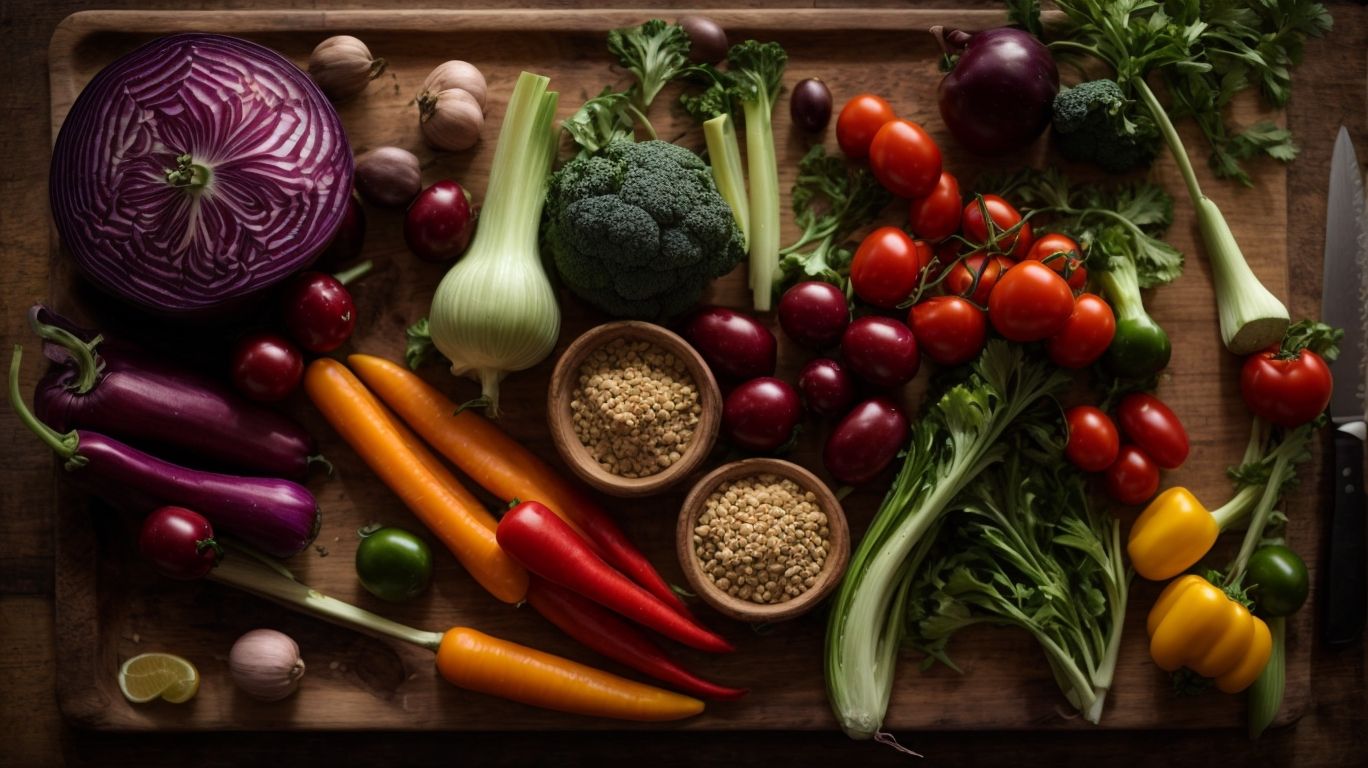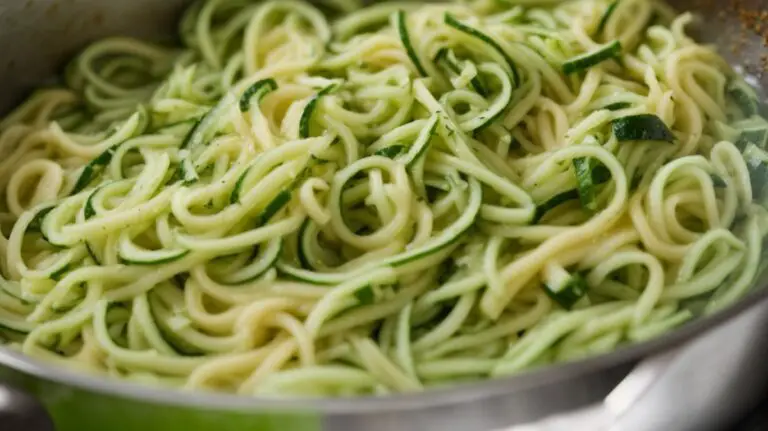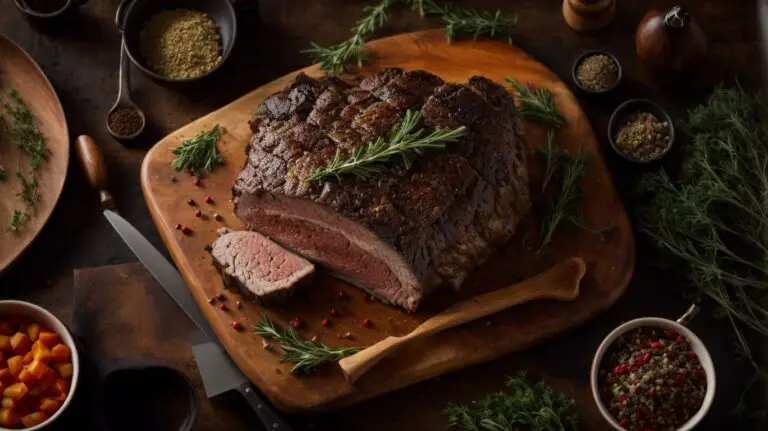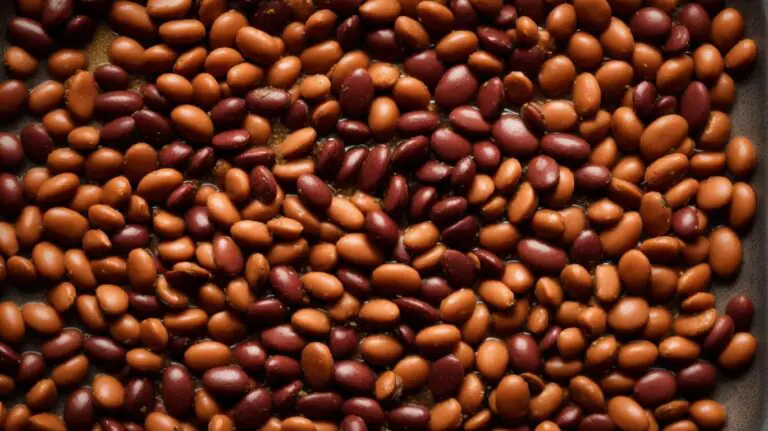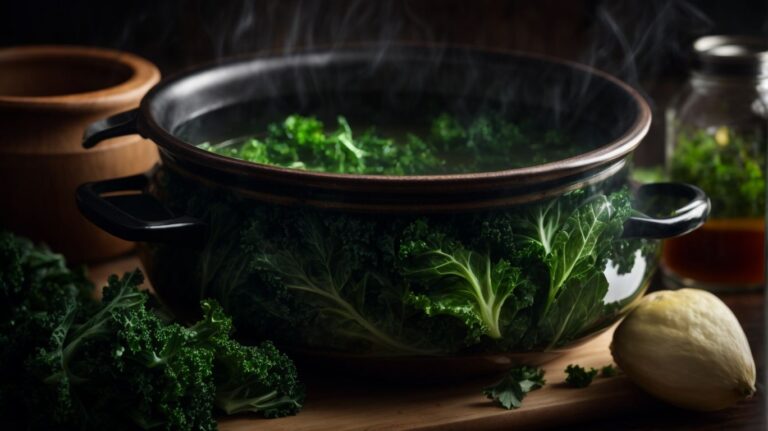How to Cook Vegetables?
Are you looking to elevate your vegetable cooking game?
We will explore the benefits of cooking vegetables, how to choose the right ones, different cooking methods, tips for perfecting your veggies, and how to store them properly.
From enhancing flavor to increasing nutrient absorption, discover why cooking vegetables is not only delicious but also beneficial for your health. Stay tuned for expert tips and tricks from a culinary award-winning blogger!
Key Takeaways:
Why Should You Cook Vegetables?
Cooking vegetables is essential for enhancing their flavor, increasing nutrient absorption, and making them easier to digest.
When you cook vegetables, it not only changes their texture and taste but also helps break down the tough cell walls, making the nutrients more accessible to the body. This process can release antioxidants that are beneficial for the immune system and overall health.
Some vegetables contain compounds that are more easily absorbed by the body when cooked, such as lycopene in tomatoes. By cooking vegetables, you can create a variety of delicious dishes that are not only satisfying but also packed with essential vitamins and minerals.
Enhances Flavor
Enhancing the flavor of vegetables through cooking involves various techniques that bring out the natural tastes and textures of different vegetables.
One popular method to enhance vegetable flavors is roasting. Roasting vegetables caramelizes their natural sugars, intensifying their sweetness and developing a deeper, richer taste. It also adds a pleasant charred aroma that enhances the overall flavor profile.
Sautéing is another versatile cooking technique that quickly cooks vegetables in a pan with some oil or butter, allowing the flavors to concentrate and the textures to remain crisp.
Grilling vegetables imparts a smoky flavor and beautiful grill marks, enhancing their taste and visual appeal.
Increases Nutrient Absorption
Cooking vegetables can increase the absorption of essential nutrients, making them more bioavailable and beneficial for overall health.
When vegetables are cooked, the heat can break down tough cellular walls, making the nutrients more accessible to the body. For example, carotenoids, known for their antioxidant properties, are more easily absorbed from cooked carrots compared to raw ones.
Cooking can reduce the levels of certain anti-nutrients present in vegetables, which can interfere with the absorption of minerals. Overcooking can lead to the loss of heat-sensitive nutrients like vitamin C, reminding us to find a balance in our cooking methods to retain the maximum nutritional value.
Makes Vegetables Easier to Digest
Cooking vegetables can help break down complex fibers and compounds, making them easier to digest and reducing digestive discomfort.
When vegetables are consumed in their raw form, the human digestive system may struggle to fully break down the tough fibers and cell walls present in vegetables. By applying heat through various cooking methods such as steaming, boiling, or roasting, these fibers undergo a process called gelatinization and become softer and more easily digestible.
This breakdown of fibers not only aids in easier digestion but also allows for better absorption of essential nutrients like vitamins and minerals. Certain cooking methods can help neutralize anti-nutrients present in vegetables, further improving the overall nutritional value gained from consuming them.
How to Choose the Right Vegetables for Cooking?
Selecting the right vegetables for cooking involves considering factors such as seasonality, freshness, and whether they are organic or conventional.
Regarding seasonality, freshness and flavor peak when vegetables are in season. Opting for seasonal produce not only ensures better taste but also higher nutritional value as they are picked at their ripest. Take advantage of local farmer’s markets or join a Community Supported Agriculture (CSA) program to get the freshest picks.
Considering whether to choose organic or conventional vegetables is another crucial aspect. Organic vegetables are grown without synthetic pesticides and fertilizers, making them a healthier option for both you and the environment. If organic produce is not accessible or within budget, prioritize the Dirty Dozen list to select organic for the most pesticide-heavy produce.
Seasonal Vegetables
Choosing seasonal vegetables ensures freshness, flavor, and optimal nutrient content in your culinary creations.
Seasonal vegetables are not only packed with essential nutrients like vitamins, minerals, and antioxidants, but they are also environmentally friendly choices. By incorporating locally sourced seasonal produce into your meals, you support sustainable farming practices and reduce the carbon footprint associated with long-distance transportation.
Utilizing seasonal vegetables allows you to experiment with a variety of vibrant colors, textures, and flavors, enhancing the overall appeal of your dishes. Their natural ripeness and peak seasonality contribute to their exceptional taste and aroma, elevating the dining experience for both you and your guests.
Freshness of Vegetables
Opting for fresh vegetables guarantees vibrant colors, crisp textures, and superior taste in your prepared dishes.
When you choose fresh vegetables for your culinary adventures, you’re not just enhancing the aesthetics of your meals – you’re elevating the entire dining experience. The brightness of the colors adds visual appeal, while the crunchiness of the textures brings a delightful contrast to your dishes. The superior taste of fresh produce can truly transform a simple recipe into a gastronomic masterpiece. The key lies in the freshness – it unlocks a spectrum of flavors and nutrients that might be lost in vegetables past their prime.
Organic vs. Conventional Vegetables
Deciding between organic and conventional vegetables involves considering factors like pesticide use, environmental impact, and personal health preferences.
Organic vegetables are grown without the use of synthetic pesticides or fertilizers. This means that organic farming methods promote sustainability by using natural processes to maintain soil health and reduce environmental harm. On the other hand, conventional vegetables may contain residual pesticides, which can raise health concerns if consumed frequently. Opting for organic vegetables can provide a higher nutrient content due to the healthier soil and farming practices employed.
What Are the Different Cooking Methods for Vegetables?
There are various cooking methods for vegetables such as boiling, steaming, roasting, sauteing, and grilling, each offering unique flavors and textures.
Boiling vegetables involves submerging them in hot water until they are tender, which is great for dishes like soups or stews.
Steaming, on the other hand, retains more nutrients compared to boiling as the vegetables are cooked with steam, preserving their natural flavors.
Roasting vegetables in the oven brings out their sweetness and creates a crispy exterior, perfect for caramelizing root vegetables like carrots or beets.
Sautéing is a quick cooking method in a pan with a small amount of oil, allowing the vegetables to cook rapidly while retaining their crunch.
Grilling vegetables adds a smoky flavor and charred surface, enhancing the natural taste of veggies like bell peppers, zucchinis, and eggplants.
Boiling
Boiling vegetables is a simple and quick method that helps retain their natural color and nutrients while softening them for easy consumption.
When vegetables are boiled, they are immersed in hot water or broth until they reach the desired tenderness. This cooking technique is popular due to its convenience and ability to cook a variety of vegetables concurrently. Boiling is particularly advantageous for leafy greens like spinach and kale as it helps reduce bitterness and enhances their flavor. One downside of boiling is that some water-soluble vitamins may leach into the cooking liquid, leading to nutrient loss.
Steaming
Steaming vegetables preserves their texture and nutrients, providing a healthy and flavorful cooking option for a wide range of produce.
When vegetables are steamed, they are cooked gently with the help of steam, which helps to lock in the natural flavors of the vegetables.
-
Steaming also helps to retain the vibrant colors of the vegetables, making them visually appealing and appetizing.
-
Unlike boiling, where some nutrients are lost in the water, steaming ensures that the vegetables retain most of their nutritional value.
-
Steaming is a versatile cooking method that can be used for various vegetables like broccoli, carrots, and cauliflower, maintaining their crunchiness and enhancing their taste.
Roasting
Roasting vegetables enhances their natural sweetness and creates caramelized flavors that add depth to various dishes.
When roasting vegetables, it’s important to evenly coat them in olive oil or another preferred cooking fat to promote browning and prevent sticking. Preheat your oven to around 400-450°F for most vegetables, ensuring a hot enough temperature to caramelize the natural sugars while still maintaining a tender texture inside. Consider adding herbs like rosemary or thyme, along with a sprinkle of salt and pepper, to enhance the overall flavor profile. The beauty of roasting lies in the versatility it offers – from crispy brussels sprouts to tender sweet potatoes, the possibilities are endless.
Sautéing
Sautéing vegetables in a hot pan with oil or butter quickly cooks them, preserving their crunchiness and enhancing their natural flavors.
Sautéing is a versatile cooking technique that requires attention to detail. When heating the pan, ensure it is hot but not smoking, as this can burn your ingredients. The vegetables should be cut uniformly to ensure even cooking and to maintain their texture. Seasoning is key in sautéing; a pinch of salt and pepper or a splash of soy sauce can elevate the flavors. Remember to continuously toss the vegetables for even cooking and avoid overcooking. Incorporating fresh herbs or spices can add another layer of depth to your dish.
Grilling
Grilling vegetables imparts a smoky flavor and charred texture that elevates their taste, making them a popular choice for outdoor cooking enthusiasts.
One of the key techniques to ensure perfectly grilled vegetables is to cut them into uniform sizes to ensure even cooking.
Marinades play a crucial role in enhancing the flavors – a simple mixture of olive oil, garlic, herbs, and a splash of lemon juice can work wonders.
Regarding grilling times, delicate vegetables like zucchini and mushrooms require less time on the grill compared to denser ones such as potatoes and carrots.
Setting up different heat zones on the grill can help manage the cooking process – placing the vegetables over direct heat for searing and then moving them to indirect heat for thorough cooking.
Stir-frying
Stir-frying vegetables in a wok or pan over high heat locks in their freshness and creates vibrant, flavorful dishes with a hint of smokiness.
Regarding stir-frying, the key is to keep the process quick and efficient. The high heat ensures that the veggies cook rapidly, retaining their natural crunch and nutrients. It’s crucial to prepare everything beforehand as once you start cooking, things move fast. Choose a good oil with a high smoke point like sesame or peanut oil for that authentic flavor. Remember to keep the vegetables moving constantly in the pan to prevent them from burning. The result? A delicious medley of colors, textures, and tastes that’s both healthy and satisfying.
Tips for Cooking Vegetables Perfectly
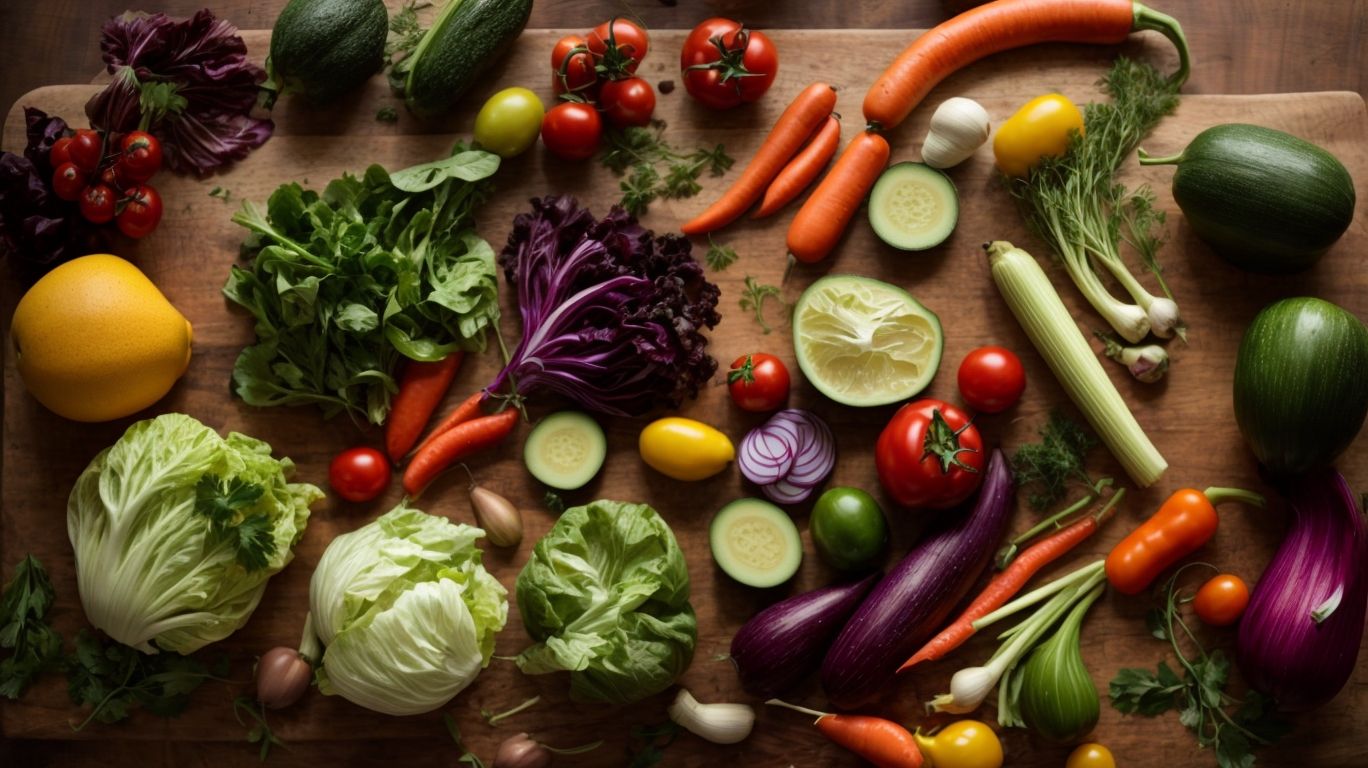
Credits: Poormet.Com – Robert Wilson
To cook vegetables perfectly, avoid overcooking, use a variety of seasonings and sauces to enhance flavor, and ensure you have the right cooking tools for the job.
Regarding timing, each vegetable has its own cooking requirements. Leafy greens like spinach or kale cook quickly and should only be sautéed for a few minutes, while root vegetables such as potatoes or carrots may need more time to soften when roasting or boiling.
Experimenting with different seasonings can completely transform the taste of your veggies. Try using fresh herbs like basil or cilantro, or spice it up with chili flakes or cumin. Be mindful of using too much salt and opt for healthier alternatives like lemon juice or vinegar for added flavor.
Essential kitchen tools for vegetable cooking include a sharp knife for chopping, a good quality vegetable peeler, a reliable non-stick skillet for sautéing, and a steamer basket for preserving nutrients while cooking.
Don’t Overcook Vegetables
Overcooking vegetables can lead to nutrient loss, mushy textures, and bland flavors, so it’s crucial to monitor cooking times carefully.
To avoid this common mistake, it’s important to understand the optimal cooking times for various vegetables. Each vegetable has its own ideal cooking time to preserve nutrients and flavors. For example, leafy greens like spinach require only a few minutes of cooking to retain their vibrant color and nutritional value, whereas root vegetables such as potatoes need longer cooking times to achieve a soft yet firm texture.
Add Flavor with Seasonings and Sauces
Enhance the taste of cooked vegetables by experimenting with various seasonings, herbs, spices, and sauces that complement their natural flavors.
For example, roasted Brussels sprouts can be elevated with a sprinkle of balsamic glaze or a drizzle of honey mustard dressing.
In contrast, a simple combination of olive oil, garlic, and lemon zest can bring out the freshness of steamed asparagus.
Exploring the savory side, a blend of smoked paprika, cumin, and a touch of soy sauce can transform grilled eggplant into a flavorful delight.
Remember, the key is to balance the flavors, whether through contrasting elements or complementary profiles, to create memorable vegetable dishes.
Use the Right Cooking Tools
Selecting the appropriate cooking tools such as knives, cutting boards, and pans can streamline the vegetable preparation process and ensure efficient cooking results.
Regarding knives, opting for a high-quality chef’s knife can make all the difference in speed and precision. A sharp, well-balanced blade allows for smooth, controlled cuts, reducing the risk of accidents. Having a variety of knives like a paring knife for delicate work and a serrated knife for bread can enhance your cutting capabilities.
Utilizing the right cutting board is equally vital in vegetable prep. Wooden or plastic cutting boards are gentle on knife blades, ensuring longevity, while also being easier to clean and maintain. Investing in quality pans, such as non-stick or stainless steel, can prevent food from sticking and make cleaning up a breeze.
How to Store Cooked Vegetables?
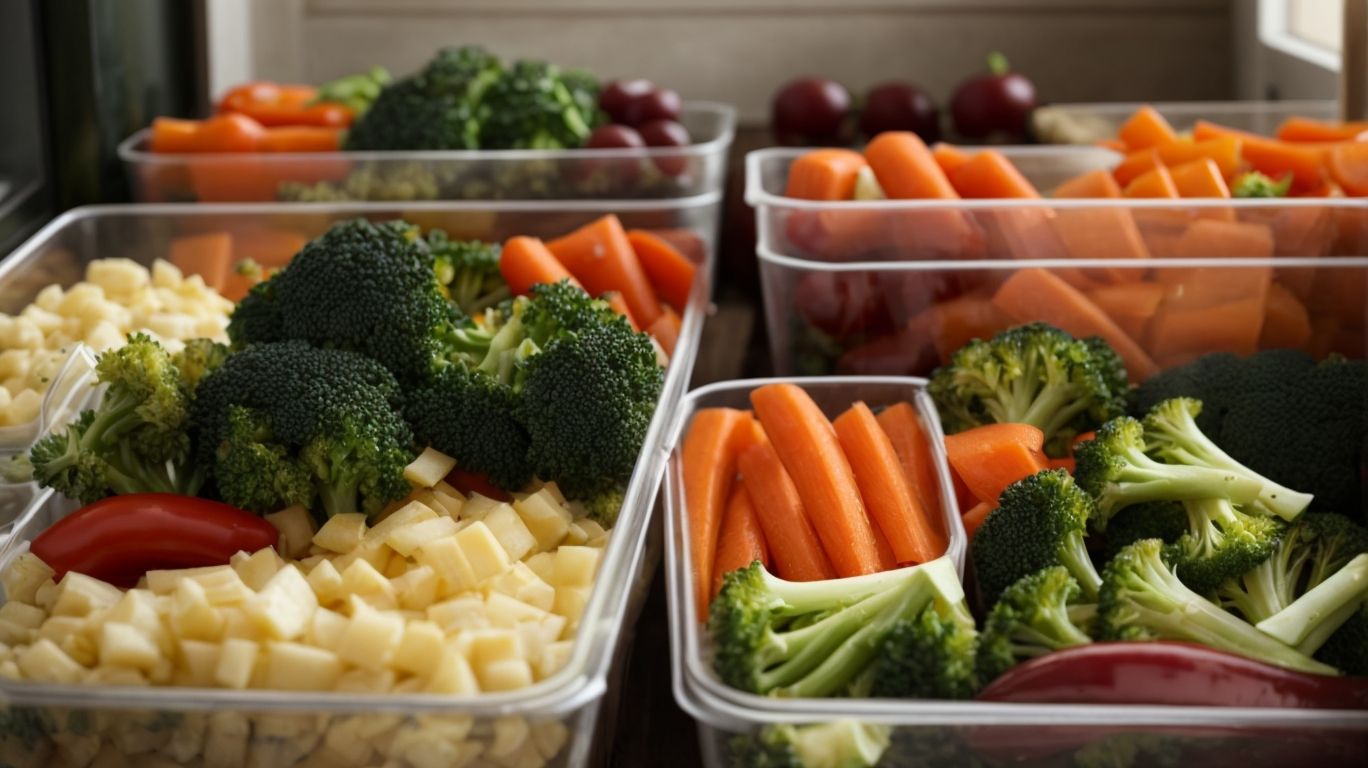
Credits: Poormet.Com – Douglas Carter
Properly storing cooked vegetables involves refrigeration for short-term storage, freezing for longer shelf life, and reheating techniques to maintain flavor and texture.
When refrigerating cooked vegetables, it’s crucial to transfer them into airtight containers or sealable bags to prevent moisture loss.
Refrigeration slows down the growth of bacteria, extending the veggies’ freshness for a few days. For a longer shelf life, freezing is the way to go.
Freezing vegetables should be done promptly after cooking to preserve their nutrients. Vegetables like peas, corn, and broccoli can be blanched before freezing to lock in their flavors and colors.
Refrigerating Cooked Vegetables
Refrigerating cooked vegetables promptly after preparation helps retain freshness, prevent spoilage, and extend their shelf life for future consumption.
Proper storage temperature is key when it comes to keeping cooked vegetables fresh. It is recommended to store them in the refrigerator at a temperature below 40°F (4°C) to slow down bacterial growth and maintain quality. Utilizing airtight containers or resealable bags can help preserve their flavors and textures.
Food safety practices should always be adhered to by promptly refrigerating leftovers within two hours of cooking. By following these guidelines, you not only ensure the longevity of your cooked vegetables but also reduce the risk of foodborne illnesses.
Freezing Cooked Vegetables
Freezing cooked vegetables preserves their nutrients and flavors, allowing for longer storage periods and convenient meal preparation in the future.
When freezing cooked vegetables, proper packaging is key to maintain their quality. You can use airtight containers, freezer bags, or vacuum-sealed pouches to prevent freezer burn and lock in freshness. Label each package with the date to track optimal storage times and avoid spoilage.
Regarding thawing, gradual is best. Place the frozen vegetables in the refrigerator overnight or use a cold water bath for quicker thawing. Avoid microwaving directly from frozen, as it can lead to uneven heating and loss of texture.
For optimal results, consume the frozen cooked vegetables within 6 to 12 months. This ensures maximum freshness and retains the essential nutrients for nutritious meals all year round.
Reheating Cooked Vegetables
Reheating cooked vegetables requires gentle methods such as steaming or microwaving to preserve texture, flavor, and nutrient content.
When reheating vegetables using the stovetop, it is essential to maintain a low to medium heat to prevent overcooking or loss of essential nutrients.
For microwaving, cover the dish with a damp paper towel or microwave-safe lid to retain moisture and prevent sogginess. Heating in short intervals and stirring in between ensures even reheating without drying out.
Using a steamer is another excellent method to reheat vegetables. The gentle steam helps to revive the vegetables without compromising their texture or taste.
By reheating vegetables with care and control, you can enjoy their delicious flavors and nutritional benefits as if freshly cooked.
Frequently Asked Questions
1. How do I know when my vegetables are cooked?
The best way to know if your vegetables are cooked is to test their tenderness. Use a fork to poke through the vegetables, if they are tender and easy to pierce, then they are cooked. Avoid overcooking as it can result in mushy vegetables.
2. What is the best way to cook vegetables to retain their nutrients?
The best way to cook vegetables is through steaming or roasting. These methods help retain the nutrients in the vegetables, unlike boiling which can lead to loss of nutrients in the cooking water.
3. Can I cook all vegetables the same way?
No, each vegetable has its own cooking time and method. Some vegetables like broccoli and cauliflower can be steamed, while others like carrots and potatoes are better suited for roasting. It’s important to research and understand the best cooking method for each vegetable.
4. How can I add flavor to my cooked vegetables?
You can add flavor to your cooked vegetables by using herbs, spices, and sauces. Some popular choices include garlic, lemon juice, soy sauce, and balsamic vinegar. Experiment with different flavors to find your favorite combination.
5. How can I cook vegetables to make them more appealing to picky eaters?
If you or your family members are not fans of plain vegetables, try incorporating them into dishes like stir-fries, soups, or casseroles. This way, the vegetables are mixed in with other flavors and can be more appealing to picky eaters.
6. Are there any vegetables that should not be cooked?
Yes, some vegetables, like lettuce, cucumbers, and tomatoes, are best enjoyed raw. Cooking these vegetables can result in a loss of texture and nutrients. Stick to eating these vegetables raw in salads or as toppings for sandwiches.

